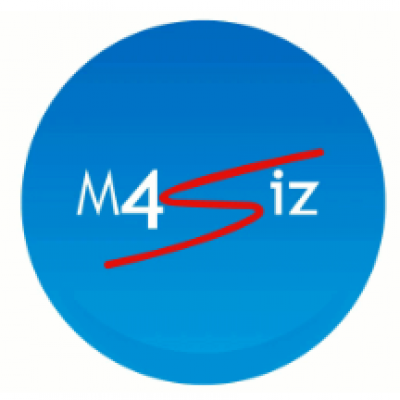
Top 12 Current Trends in Software Development: Elevating Customer-Centricity for Success
In the ever-evolving realm of software development, staying at the forefront of industry trends is imperative. As technology advances, so do the strategies and methodologies that influence how we create, deploy, and manage software. As SME business it is important to explore how these trends can impact on impact on your business productivity and revenues. In this blog post, we will delve into the top 12 current trends in software development, placing a particular emphasis on the drive toward customer-centricity. Our overarching goal is to offer customers “seamless,” “relevant,” and “omnichannel” experiences while assisting developers in delivering these solutions faster, more affordably, and without sacrificing quality.
Some pointers in trends impacting on business
DevOps and CI/CD: Accelerating Development Velocity
- DevOps and Continuous Integration/Continuous Deployment (CI/CD) continue to be
pivotal in software development. These practices promote collaboration,
allowing for swift, reliable software delivery. CI/CD pipelines automate
crucial processes, enabling developers to deploy updates and features at
a rapid pace.
Microservices and Containerization: Enhanced Scalability and Adaptability
- Microservices architecture and containerization are essential for creating flexible,
scalable systems. Breaking down monolithic applications into manageable
services simplifies deployment, making it easier to meet evolving
customer demands seamlessly.
- Microservices architecture and containerization are essential for creating flexible,
AI and ML Integration: Personalization and Efficiency
- Artificial Intelligence (AI) and Machine Learning (ML) play an increasingly crucial
role in software development. These technologies facilitate intelligent
automation, data analysis, and predictive capabilities. By harnessing AI
and ML, developers can provide customers with more personalized and
relevant experiences while streamlining internal processes.
- Artificial Intelligence (AI) and Machine Learning (ML) play an increasingly crucial
Low-Code/No-Code Development: Democratizing Software Creation
- Low-code and no-code development platforms continue to gain traction,
democratizing software creation. These tools empower a wider audience to
develop applications, accelerating the development process and fostering
a more customer-centric approach.
- Low-code and no-code development platforms continue to gain traction,
API-First Development: Enabling Seamless Experiences
- An “API-First” approach has become fundamental for creating
applications that integrate seamlessly with other services and channels.
This trend is paramount for delivering “omnichannel”
experiences and ensuring harmonious interactions between various systems.
- An “API-First” approach has become fundamental for creating
Cybersecurity and Data Privacy: Protecting Customer Interests
- As data security and privacy concerns grow, software developers are placing
a strong emphasis on these aspects. Implementing secure development
practices, data encryption, and compliance with regulations like GDPR is
crucial in building customer trust.
- As data security and privacy concerns grow, software developers are placing
Augmented Reality (AR) and Virtual Reality (VR): Immersive Customer
Experiences
- AR and VR technologies are being harnessed to provide immersive and engaging
experiences in gaming, e-commerce, and beyond, further enhancing customer
satisfaction.
- AR and VR technologies are being harnessed to provide immersive and engaging
Blockchain Technology: Ensuring Data Integrity
- Beyond cryptocurrencies, blockchain is gaining traction in supply chain
management and data integrity applications, helping maintain trust and
transparency in customer interactions.
- Beyond cryptocurrencies, blockchain is gaining traction in supply chain
Edge Computing: Reducing Latency and Enhancing Real-Time Processing
- Edge computing brings computing resources closer to data sources, reducing
latency and improving real-time processing. It is particularly valuable
for IoT and real-time analytics, offering customers more responsive
experiences.
- Edge computing brings computing resources closer to data sources, reducing
Quantum Computing: Potential for Revolutionary Capabilities
- Although still in its infancy, quantum computing has the potential to transform
certain computational tasks, opening up new possibilities for
cryptography, optimization, and other customer-centric applications.
- Although still in its infancy, quantum computing has the potential to transform
Agile and Beyond: Adaptable and Secure Development
- Agile methodologies remain prevalent, with organizations exploring variations
like “Scaled Agile Framework” (SAFe) and “DevSecOps”
to ensure security is integrated throughout the development process.
- Agile methodologies remain prevalent, with organizations exploring variations
Serverless Computing: Simplifying Infrastructure Management
- Serverless computing simplifies infrastructure management, allowing developers to
focus on writing code without the overhead of infrastructure maintenance.
This trend aids in delivering cost-effective, scalable solutions for
customers.
- Serverless computing simplifies infrastructure management, allowing developers to
Let's continue a conversation
Software development continues to evolve rapidly, with an unwavering focus on customer-centricity. To provide customers with “seamless,” “relevant,” and “omnichannel” experiences. Although developers are adopting an array of trends, many are overpowered for the SME sector. However, we do suggest including discussions around DevOps, AI/ML integration, low-code/no-code development, API-first strategies, and many more deserve thinking about. These trends not only align with customer
expectations but also assist business developers to sponsor solutions quickly, cost-effectively, and with the utmost quality. Staying informed about these trends and integrating them into development practices is essential for success in the ever-changing world of software development.
Did you enjoy reading our great business insights
page? Send us a review if you thought it
worthwhile.
You will find lots of goodies on our Facebook page as well.
If you have any questions or want to explore a potential
project with us, it is a simple reach out by phone or contact form.

